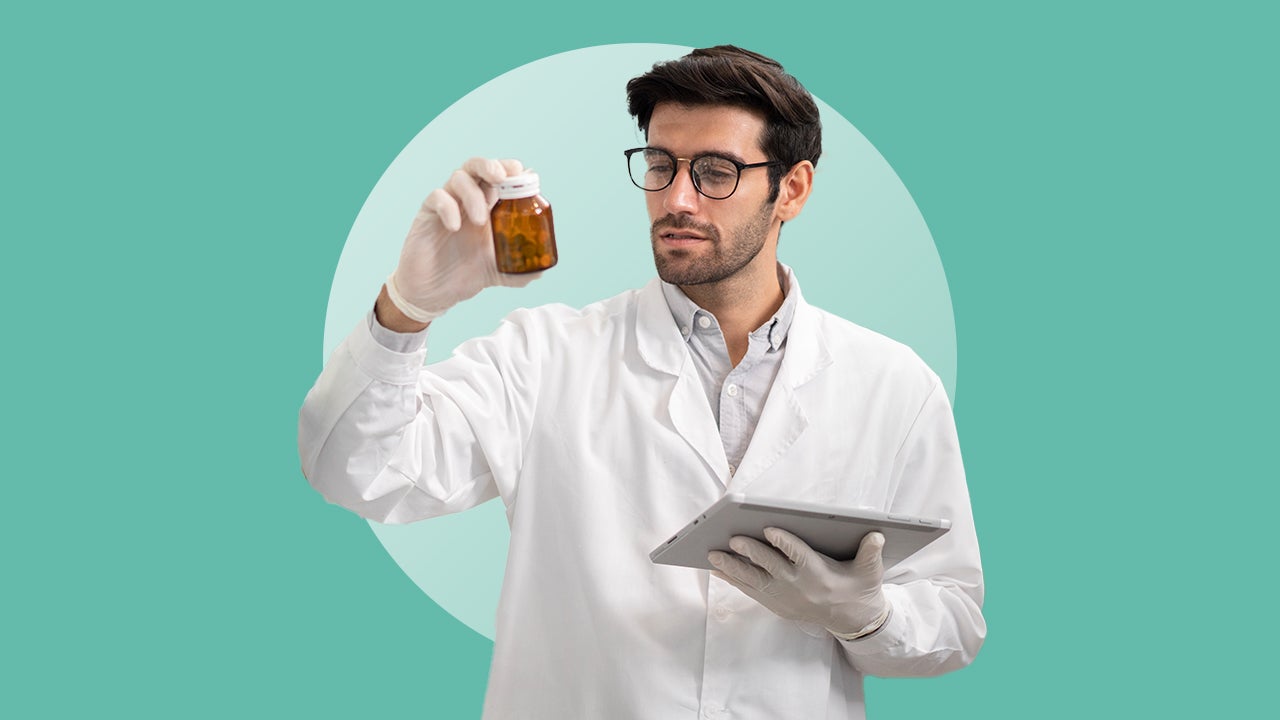Photography by Getty Images; Illustration by Bankrate
Key takeaways
- The median annual pay for pharmacists was $136,030 in 2023.
- California, Texas and New York have some of the highest pharmacist salaries.
- The average student loan debt for pharmacists in 2022 was $170,444.
Pharmacists earn a six-figure salary on average, with the exact figure depending on your location, industry and experience level. If you’re considering this career path, it’s worth looking beyond the earning potential, as it commands at least six years of schooling.
Unless you have the funds on hand to cover your educational expenses, you’ll likely incur a sizable amount in student loans. Keep these factors in mind when deciding if becoming a pharmacist is the right career for you.
What’s the salary of a pharmacist?
The latest data from PayScale shows the average salary of an entry-level pharmacist is currently between $87,000 and $131,000 per year. That number could be higher or lower, depending on your specific circumstance.
The most recent data from the Bureau of Labor Statistics (BLS) shows that the lower 10 percent of pharmacists earn less than $89,980, and metropolitan areas typically pay more than non-metropolitan areas, regardless of experience.
For all others in the field, BLS reports the median salary of a pharmacist is $136,030, but the government agency’s data from May 2023 also shows how much annual figures can vary by industry, with the top-paying industries listed below:
| Industry | Salary |
|---|---|
| Outpatient care centers | $164,180 |
| Miscellaneous retailers | $154,200 |
| Home health care | $146,350 |
| Substance abuse and psychiatric hospitals | $145,440 |
| Average pharmacist salary by industry | Source: BLS |
What states pay pharmacists the most?
Location plays a key role in your earning potential. The following tables show the five highest-paying states, as well as those with mid-range and lower-end salaries for pharmacists. It’s worth noting that the highest-paying states have a steeper cost of living relative to other states nationwide:
| State | Average salary |
|---|---|
| California | $157,280 |
| Alaska | $151,600 |
| Oregon | $149,550 |
| Washington | $148,550 |
| Minnesota | $143,210 |
| Highest-paying states for pharmacists | Source: BLS |
| State | Average salary |
|---|---|
| Illinois | $133,050 |
| Arizona | $133,088 |
| Texas | $133,600 |
| North Carolina | $134,600 |
| South Carolina | $134,960 |
| Mid-range state salaries for pharmacists | Source: BLS |
| State | Average salary |
|---|---|
| West Virginia | $121,000 |
| Tennessee | $122,820 |
| Louisiana | $124,770 |
| Ohio | $124,850 |
| Mississippi | $125,330 |
| Lower-end state salaries for pharmacists | Source: BLS |
If you’re uncertain about job prospects upon completion of pharmacy school, these states have the highest employment levels of pharmacists nationwide and the highest concentration of pharmacists, respectively:
| State | Number of people employed |
|---|---|
| California | 35,980 |
| Texas | 24,740 |
| Florida | 21,360 |
| New York | 20,310 |
| Pennsylvania | 15,230 |
| States with the highest employment levels | Source: BLS |
| State | Employment level per 1,000 jobs |
|---|---|
| West Virginia | 3.67 |
| Kentucky | 2.79 |
| Washington | 2.70 |
| Missouri | 2.68 |
| Ohio | 2.67 |
| States with the highest concentration of pharmacists | Source: BLS |
Which cities pay pharmacists the most?
The city you choose to live in can also determine how much you’ll earn as a pharmacist. These cities have the highest salary averages:
| City | Average salary |
|---|---|
| Napa, CA | $182,380 |
| San Francisco, CA/Oakland/Hayward | $179,500 |
| San Jose/Sunnyvale/Santa Clara, CA | $178,920 |
| Vallejo-Fairfield, CA | $174,620 |
| Florence, SC | $169,680 |
| Cities with the highest salaries | Source: BLS |
If you’re considering a metropolitan area to launch your career, these areas have the highest employment levels for pharmacists and the highest concentration of pharmacy jobs, respectively:
| Metropolitan area | Employment level |
|---|---|
| New York/Newark/Jersey City, NY, NJ, PA | 21,520 |
| Los Angeles/Long Beach/ Anaheim, CA | 13,110 |
| Chicago/Naperville/Elgin, IL, IN, WI | 9,420 |
| Philadephia/Camden/Wilmington, PA, NJ, DE, MD | 7,760 |
| Dallas/Fort Worth/Arlington, TX | 6,880 |
| Metropolitan areas with the highest employment levels | Source: BLS |
| Metropolitan area | Employment level per 1,000 jobs |
|---|---|
| Morgantown, WV | 6.73 |
| Iowa City, IA | 4.60 |
| Bloomsburg/Berwick, PA | 4.51 |
| Huntington/Ashland, WV, KY, OH | 4.01 |
| Beckley, WV | 3.90 |
| Metropolitan areas with the highest concentration of pharmacy jobs | Source: BLS |
Is becoming a pharmacist worth it?
To decide, compare the cost of earning a degree to your earning potential. According to the American Association of Colleges of Pharmacy (AACP), the average student loan debt for pharmacists is a steep $158,000.
If you find a doctor of pharmacy degree for a reasonable cost, you’ll get a much better return on your investment if you end up earning a higher-than-average salary. On the other hand, if you take on a lot of student loan debt, a large portion of your salary would go into monthly payments years after you graduate.
Mind over money
A pharmacy degree is only worth it if you truly enjoy the career path ahead of you. A higher salary isn’t worth it if you aren’t happy with your job.
Bottom line
A career as a pharmacist can be quite lucrative, depending on where you plan to live. In some of the highest-paying regions, the average salary exceeds $180,000 annually. This is not the case everywhere, and the cost of obtaining a PharmD degree can result in years of student loan debt.
Before making such a significant investment, consider whether it’s a career path that will hold your interest for years to come. If you decide to move forward, consider less expensive options for obtaining a pharmacist degree, including public colleges.
Read the full article here





